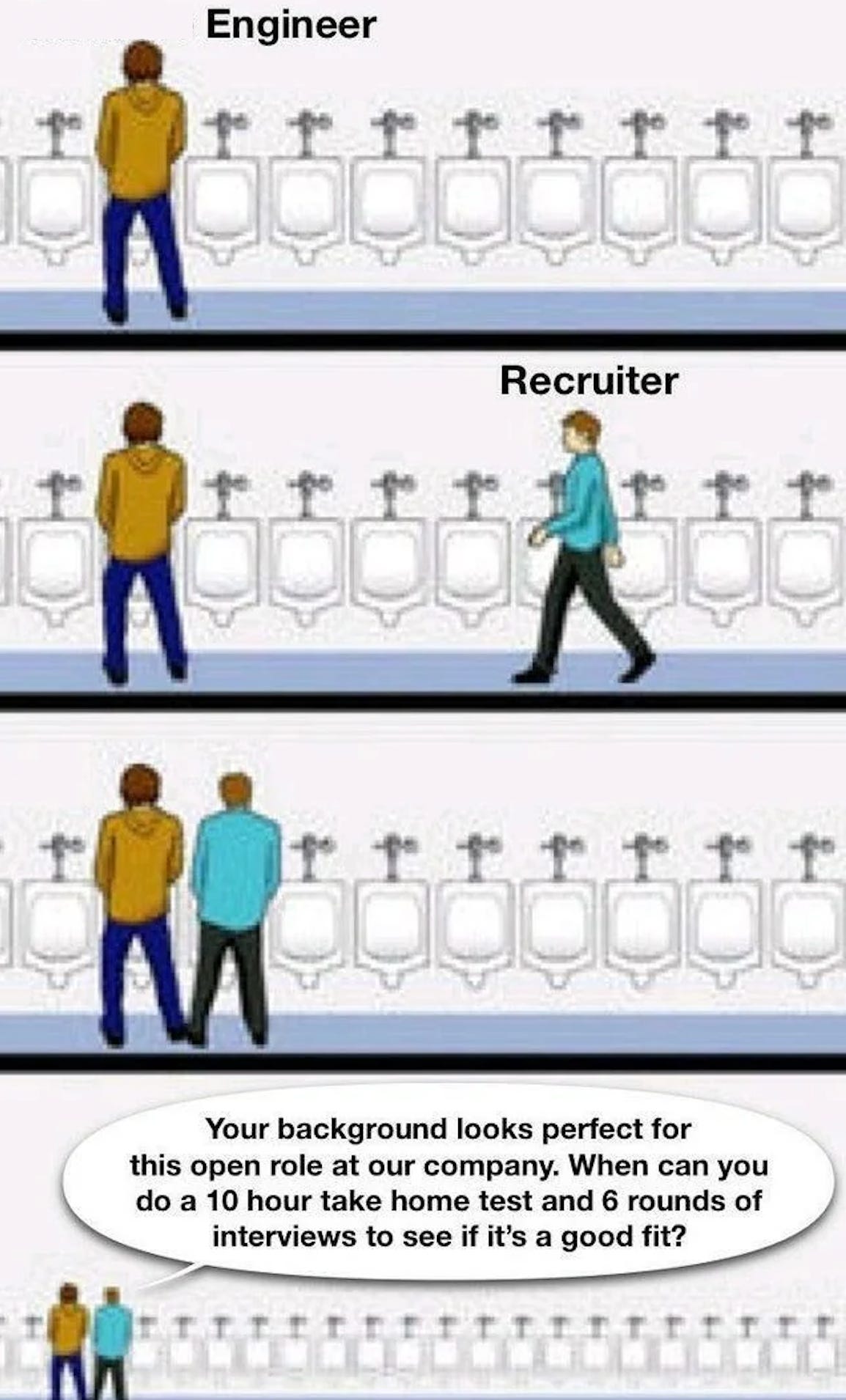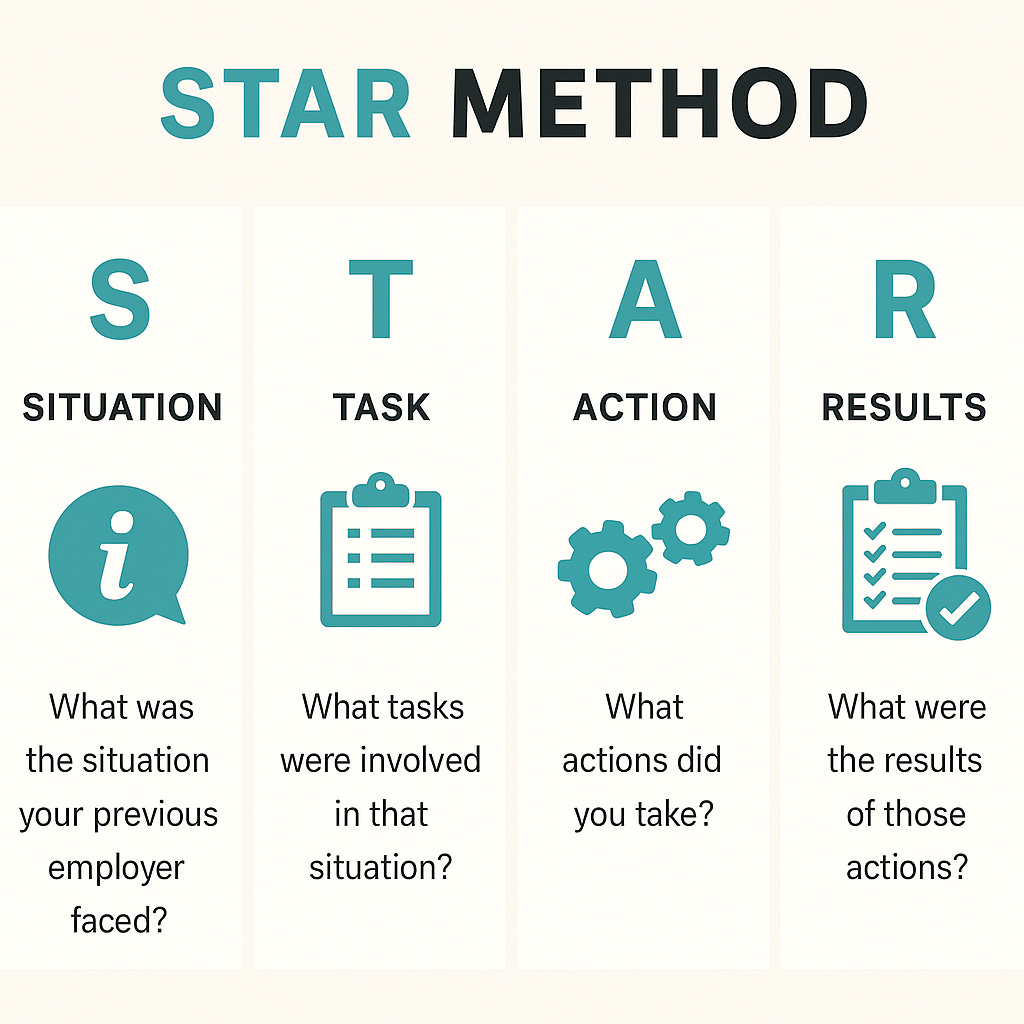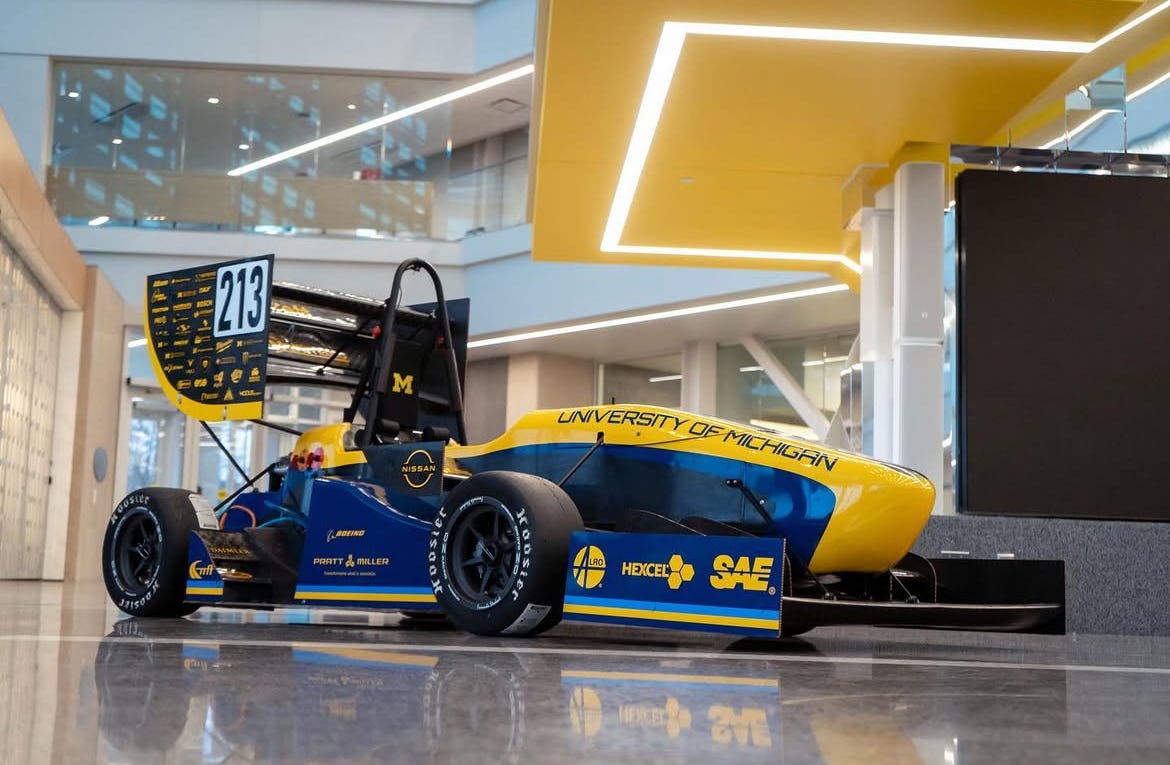🦸 Guest Writer: Madhav!
This week’s newsletter is a special edition written by Madhav Bhat with input compiled from several other engineers all with recent experiences in the internships —> full-time pipeline! We love getting fresh perspectives and wanted to share Part 1 of this comprehensive How 2 Recruit that Madhav put together! Madhav graduated from the University of Michigan with his BSE and MSE May of 2024. Throughout his recruiting journey he interviewed for mechanical engineering internships and full-time positions with companies from large Fortune 500 corporations (think Ford, Michelin, Apple) to growth-stage companies (think Tesla, SpaceX, Anduril) to startups ranging from 3-1000 people in size working on all sorts of projects.
Introduction
During my years at Michigan, I realized that mechanical engineers don’t know enough about the recruitment process and how to recruit well. A lot of recruitment advice is outdated and we are entering a new age of engineering recruiting that universities don’t always tailor their advice for. The goal of this document is to fill in a lot of knowledge gaps and answer questions about recruiting for internships and full-time jobs at any company a mechanical engineer would want to join. I want this document to be the first thing a student references when starting their recruitment journey. Even though I did well at getting interviews, that didn’t necessarily translate into landing offers, whether it was “right place wrong time” or just bombing the interview. However, I did find a few tips with a high impact on odds of success.
I believe the “getting interviews” advice most appropriately correlates with the company growth stage which is how I’ve broken down the mechanical design section, so it is included there. Manufacturing (to be covered in the future!) is most appropriately broken down by production volume rather than growth stage so I’ve broken it down that way (startups tend to be lower volume, whereas growth and large companies vary). And then I’ve included some other semi-MechE roles at the end that students might be interested in.
This is general advice stemming from mine and some other people’s experiences so please take it with a grain of salt as it is anecdotal. I am not at all saying every company that falls into a certain bucket will recruit the same way; this is just general semi-specific advice :)
🤠 Meme of the Week
Mechanical Design Roles:
Like stated in the intro this section is broken down by company stage. Established companies include legacy mechanical engineering companies like big 3 automakers, mechanical component suppliers and more. Growth stage companies are slightly newer but have experienced rapid growth that has allowed them to become industry leaders and have different interview processes than legacy automakers. Examples include Tesla, SpaceX, Lucid Motors, and FAANG. Finally, startups are small hardware companies anywhere from Seed to Series E (and sometimes beyond lol).
Established Companies (Insights from Jack Decker former Mechanical Design Intern at KLA):
Recruiting at established companies can vary quite a lot, but I see in-person career fairs as the best shot at securing interviews. Recruiters on LinkedIn tend to be less responsive at these large companies; however, in-person conversations tend to turn into interview opportunities.
In Jack’s case, he met a recruiter at the career fair and attended an information session to learn more about the company and role. Following that, he had an HR screen and then a technical interview. I had a similar experience when recruiting for large automakers where a chat at the career fair led to the interview. The key factor here is passion. Do detailed research on each company before you go. Don’t just talk to a recruiter there, speak to the engineers and learn both about their day-to-day and cool projects. For example, Toyota’s engineering department prioritizes reliability (having started 6 sigma and all that), Lockheed might prioritize regulatory compliance and safety, Dyson might prioritize user experience, etc. Demonstrated interest can take you farther than you think here. Jack showed even more demonstrated interest by taking a PTC Creo course on Udemy when it was mentioned in the job description.
In both his and my experience, familiarity with the STAR interview format (situation, task, action, response) was crucial and expected. This is also just a good framework for all interviews. When discussing previous projects, be articulate, concise, and illustrative. Show why what you did was cool and how other people benefited from your project. Sometimes they will ask technical questions about things like root cause analysis or previous projects (What would you change if you went back? Most technically complex feature? Your design process and tools used?), but by and large these interviews tend not to get too technical. Expect project management and behavioral questions on topics like team and time management and prioritization.
For internships for most companies at this stage, expect about 2 rounds of interviews after the HR screen.
Growth Stage Companies (Insights from an Engineer at Joby Aviation):
A lot of times roles at these companies don’t involve just living in CAD, it’s more of a full service role. It can be multidisciplinary in nature involving design, testing, manufacturing, etc. An emphasis is placed on component ownership from inception through production, so whether you want to or not, you’d get to own all aspects of design from concept development to prototyping to test to production. How do you prepare for this?
The networking tips for recruiting are also the same (LinkedIn cold messaging and IRL networking). Many times, these companies will also show up at career fairs since they are hiring so much, but keep in mind that they will be the most popular booths and you will have to really stand out to convert into an interview. Be prepared to answer technical questions about past projects on the spot. They’ll also be at project team competitions like Baja and Formula SAE which are awesome recruiting events as well (but remember some of the most passionate engineers are at those events…so really think about how you’re going to wow these companies). I’ve gotten wrecked at a couple of these in-person events…
Also, look at the types of products made at these companies, what they prioritize in design, and how you can talk about your projects in a way that’s appealing to them. For example, in consumer electronics, a huge priority is aesthetics and mass manufacturability. In aerospace, your materials knowledge will come in handy. Etc.
In the Tesla application, they ask for “Evidence of Excellence” and that mentality translates across these companies. In my interviews with companies at this stage, I’ve been asked some of the most difficult technical and nontechnical questions which have made me feel embarrassed or question my engineering skill. I hope you don’t feel that way when interviewing, which is why I urge you to not only know the details of your projects but why you made the engineering decisions you did. This is where being able to talk about your ideas in a clear and digestible manner becomes extremely important. Many times the interview process in these types of companies include a technical presentation/deep dive that encapsulates this and also evaluates whether you’ll be a good coworker (can you communicate ideas well? Do they make sense? And of course, do you make intelligent technical decisions?). It’s not just going to be engineers that ask you these tough questions but recruiters and hiring managers as well sometimes so don’t get caught off guard.
Startups (Insights from Sajiv Shah - Intern at Figure and Relativity Space):
For this section, I talked to Sajiv Shah, a Umich MechE student who interned at Figure (humanoid robots) and Relativity Space (3D-printed rockets) and he gave some insight which I’ll detail below. Overall, expect your work to be heavily multidisciplinary. Design engineer serves as a catchall for many many things that you will be doing. For example, here is a video by Anduril of what a mechanical design engineer intern did during the summer. As you can see it not only involves designing a component, but then procuring the materials, manufacturing in-house (if needed), assembly, testing, and verification/validation.
How can you get a job like this? Well first of all, dive in headfirst to everything. What that means is to get as much experience owning mechanical assemblies that do things as you can. Join your FSAE team and become a system lead on the team (also make some life long memories — cannot stress this enough).
Start a complex pet project that involves numerous disciplines of mechanical engineering. Get involved in research projects that are very hands-on. In addition to this, track (and document) your projects rigorously and be able to justify the decisions and trade-offs you made as they will almost certainly come up in an interview. Be driven: prior to interviewing at Relativity, Sajiv took a gap year and spent significant time reading a materials and structures textbook as well as worked at a drone motor company which gave him an edge in recruiting. Any way you look at it, this is not a job you get with no experience (unless you get lucky or the startup is in a veeerrryyy early stage).
Getting an interview could be through a cold application, but you’ll have way more luck DMing someone high up in the company and telling them what you’ve accomplished. Checkout more on the Hardware is Hard LinkedIn Trojan Horse for this, but be very purposeful of who you are messaging and why. Although cold applying can work, I attribute the majority of my success to LinkedIn messaging. Now that LinkedIn has cut down how many people you can personalize your invitation to, I would honestly suggest getting premium and spending that $40 or so a month because it could pan out and turn into an opportunity that’s worth much more. This is something I see very few MechEs do. Here was an invitation I sent that directly led to a startup interview during full time recruiting:
“Hi ___,
I’m a Umich MechE MSE alum and I’ve applied to the team at ____! I’ve worked on challenging engineering projects at Tesla (in process development), Stellantis, Michelin (in quality) and more. I’d love to chat about how I could be a great fit on your team!
Same strategy as listed on hardwareishard.com and it’s short, descriptive, and to the point. This was for a manufacturing role so I highlighted the teams I worked on in manufacturing environments. Another thing I would suggest is follow startups and VCs that fund these companies on Twitter/LinkedIn and reach out to them there too. I specifically follow a lot of deep tech VCs to get this info (Cantos, Eclipse, Also Capital, Susa Ventures, etc.). The interviews themselves can be tough. A lot of times they will be multiple rounds and can include a project presentation, which is geared to see how you work through physics and design as well as how you can justify the decisions you made.
Now detailing a little more of Sajiv’s advice. At a startup, decisions are made very quickly and the product lifecycle is a lot smaller so be prepared to move fast. Teach yourself, as you will be learning a lot by doing. For example, on top of the design work, since Figure is a robotics startup, Sajiv has been teaching himself about controls and frequencies. In regards to getting an interview, be persistent in reaching out to people. It’s easier to get responses from smaller companies and startups to be honest. He heard of Figure through a reporter that he maintained a connection with. You never know where your next opportunity can come from!
Good luck in those midterms! Next up we’ll be breaking out some tips for manufacturing and nontraditional roles so stay tuned! 🎵




